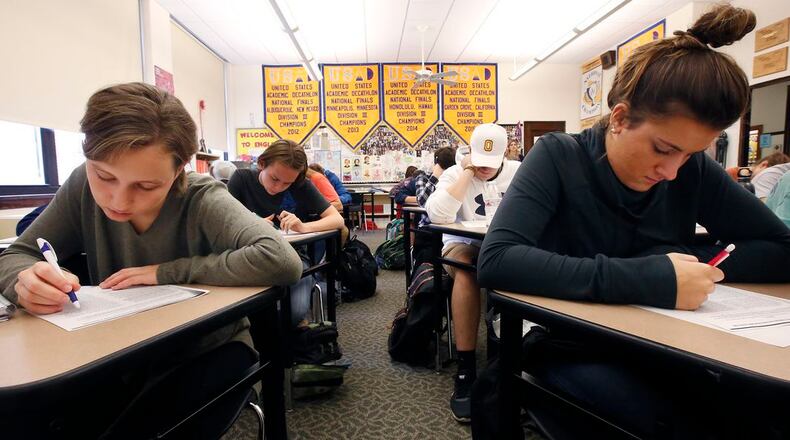ODE officials said in grades 5-8 and on high school end-of-course-exams, overall test proficiency rates decreased by about 8 percentage points in English, and by about 15 percentage points in math from spring 2019. There were no state tests in spring 2020 due to COVID closures.
In those older grades, test achievement declines in English were as much as two to three times larger in mainly remote districts than in mainly in-person districts, according to an Ohio State University analysis of the data. In third-grade English, ODE said for each week of remote learning, students’ achievement growth in English was about one-third less than the growth of their peers learning fully in-person.
School-by-school
The annual state report cards for Ohio’s K-12 schools, containing specific results for individual schools and districts, will be released in mid-October this year, one month later than usual. ODE did release preliminary district-level data for each individual state test but cautioned that it has not been fully verified.
Dayton-area schools generally mirrored the state in that preliminary data, with proficiency rates on grade-level state tests lower than in 2019 on about 80% of tests.
In the Centerville and Kettering districts, 2021 student proficiency rates were lower than 2019 on all 20 grade-level tests. In Huber Heights and Miamisburg, that was true on 19 of 20 tests.
In Centerville, the median proficiency decline was 7% per test, but as in most districts, there were outliers. On high school English 2 and geometry, Centerville’s scores were virtually flat to 2019, while on eighth-grade math, the proficiency rate dropped by 40%.
On the other hand, tiny Newton schools in Miami County actually saw its proficiency rate increase from 2019 to 2021 on eight of the 20 grade-level tests. And Greeneview schools’ proficiency rate increased on seven of 20 tests.
Equity concerns
Test participation rates were lower statewide in spring 2021, especially among traditionally lower-performing students. State officials said that means raw scores may actually overstate student achievement in comparison to previous years.
Children from traditionally lower-performing demographics struggled on the spring 2021 state tests, according to the OSU analysis. Economically disadvantaged students learned roughly 28% less than a normal year in third-grade English, while non-disadvantaged students learned 16% less.
Black students learned roughly 40% less than a normal year in third-grade English according to the OSU analysis, Hispanic students learned 34% less, Asian-American students learned 28% less and white students learned 18% less.
In grades 5-8, English tests showed learning decreases were two to three times greater among Black and Hispanic students than among white students, and two to three times greater among economically disadvantaged students than non-disadvantaged students.
Other data categories
** Chronic student absence — defined as 18 days or more of absence from education activity in a school year — increased significantly in 2020-21, with 24% of Ohio’s K-12 students meeting that definition.
** Total PreK-12 enrollment in Ohio public schools dropped about 3 percent (53,000 students) from 2019-20 to 2020-21. ODE officials said almost half of the decrease was in preschool and kindergarten, as many students likely delayed enrollment. Ohio’s homeschool enrollment increased by 55% (approximately 18,000 students) in 2020-21.
About the Author

